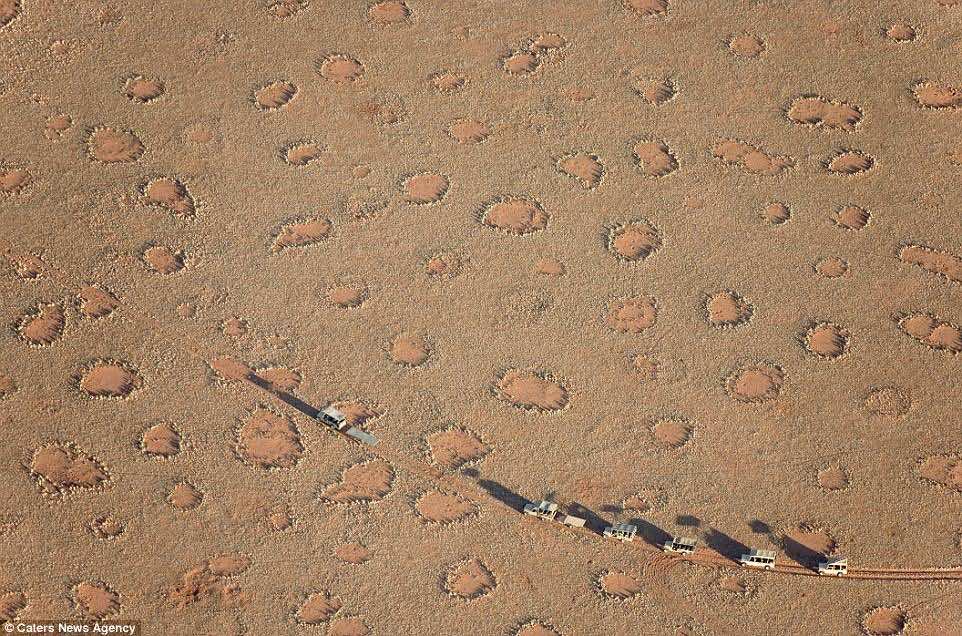Scientists have been puzzled over the origin of Namibia’s fairy circles for nearly half a century. It boils down to two theories. Either termites were responsible, or grasses self-organize to maximize water availability. About 50-90 miles from the coast in the Namib desert, there are millions of so-called fairy circles. These are circular gaps in the ground. Millions of them together form a distinctive pattern across the landscape. which is visible for miles. A typical fairy circle measures anywhere from 2 to 10 meters across, separated from the rest by a distance of up to 10 meters.
Researchers from the University of Göttingen, benefiting from two continuous rainfall seasons in the desert, discovered that grass within these circles died immediately after the rainfall. It was not the termite activity that caused the bare patches. Instead, continuous soil-moisture measurements indicated that the grasses around the circles used up all the water within the circles; therefore, they induced the death of the grasses inside the circle. Roots from dead grass inside the circles were as long as – or even longer than – roots from outside the circles, suggesting the plants were investing heavily in root growth to search for water.
The researchers did not find evidence of termites feeding on the roots, they report. Getzin says. “The sudden absence of grass for most areas within the circles cannot be explained by the activity of termites because there was no biomass for these insects to feed on.” But more importantly, we can show that termites are not responsible because the grass dies immediately after rainfall without any sign of creatures feeding on the roots.
“Under the strong heat in the Namib, the grasses are permanently transpiring and losing water. Hence, they create soil-moisture vacuums around their roots, and water is drawn toward them, “Getzin says.” “Our results strongly agree with those of researchers who have shown that water in soil diffuses quickly and horizontally in these sands, even over distances greater than seven meters.”

